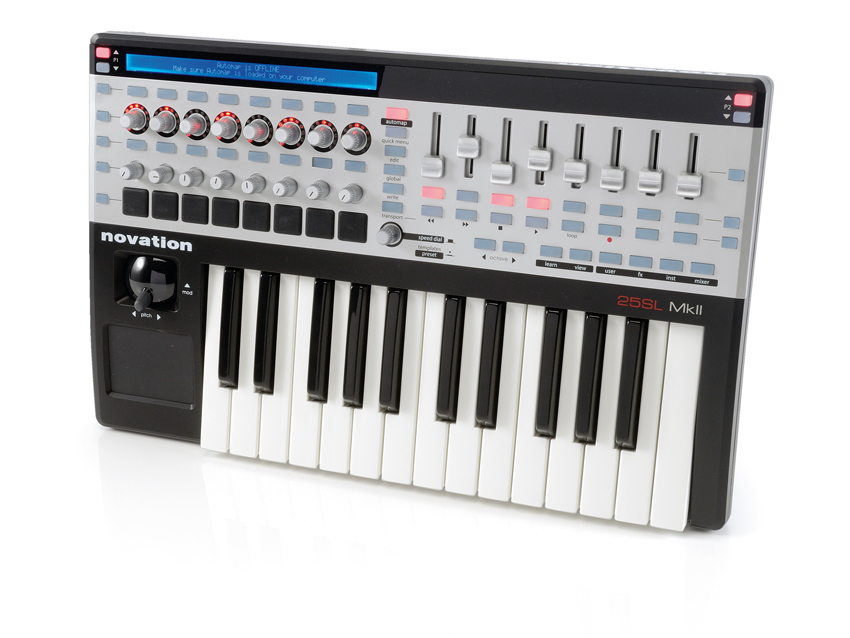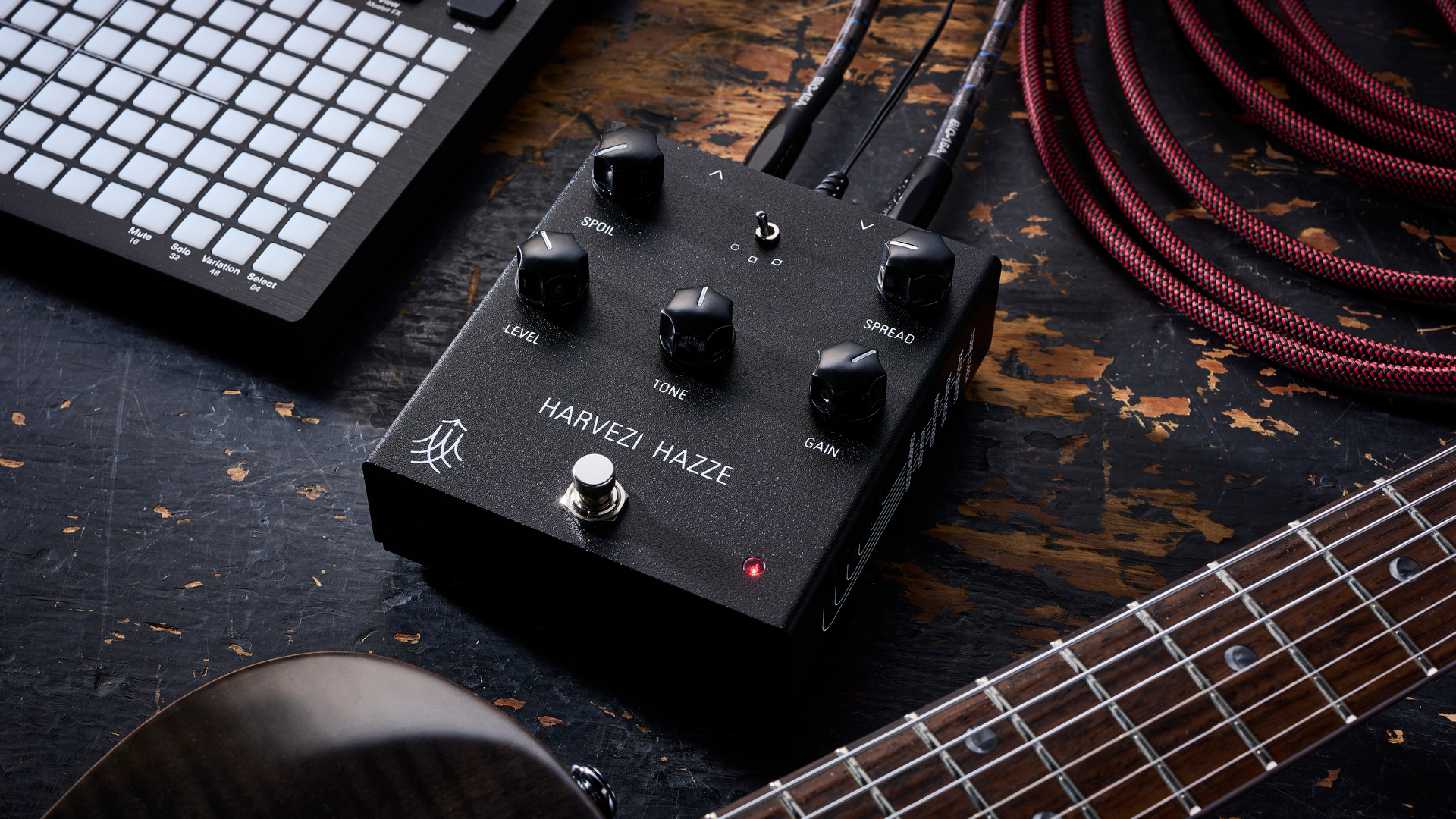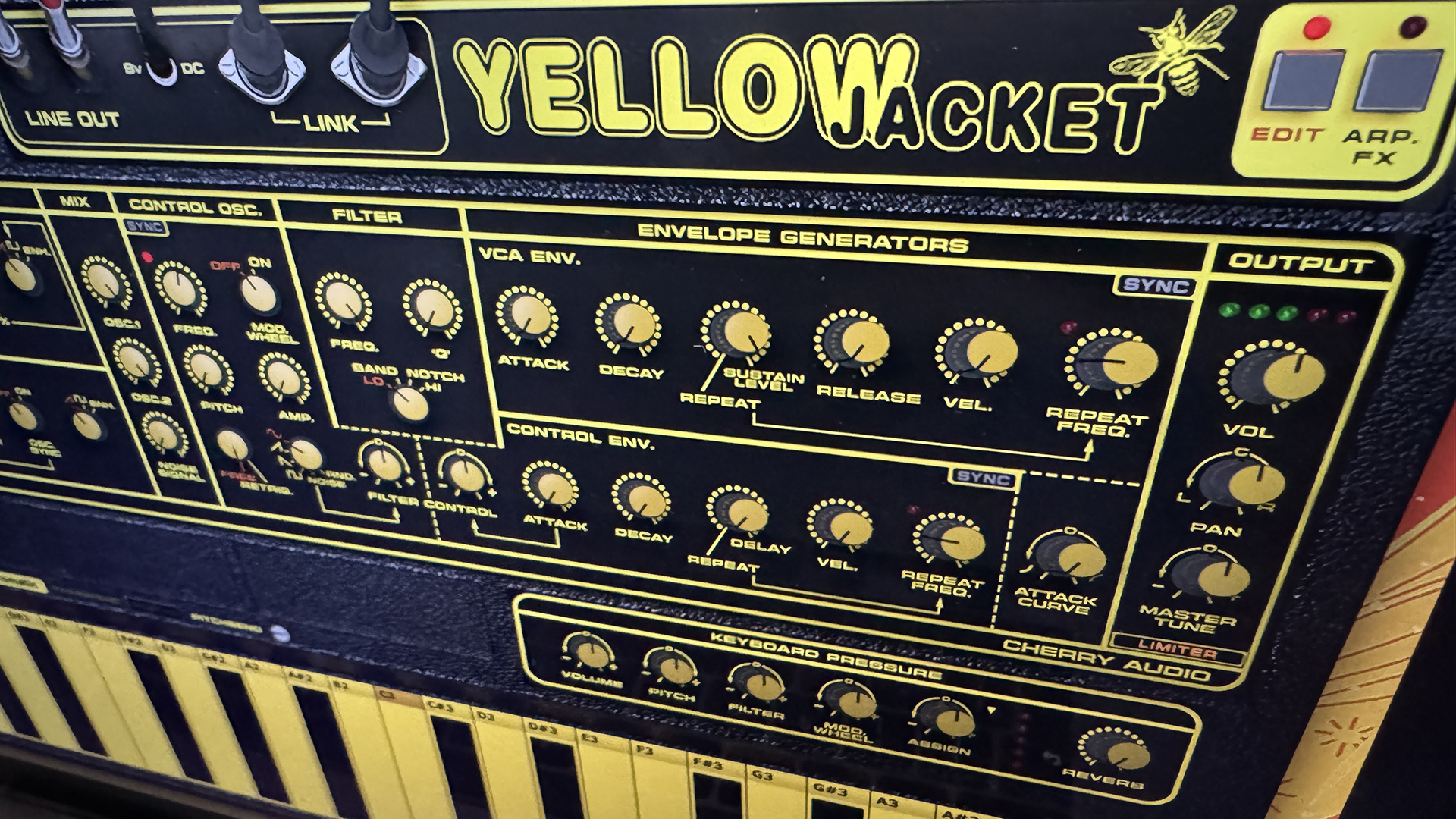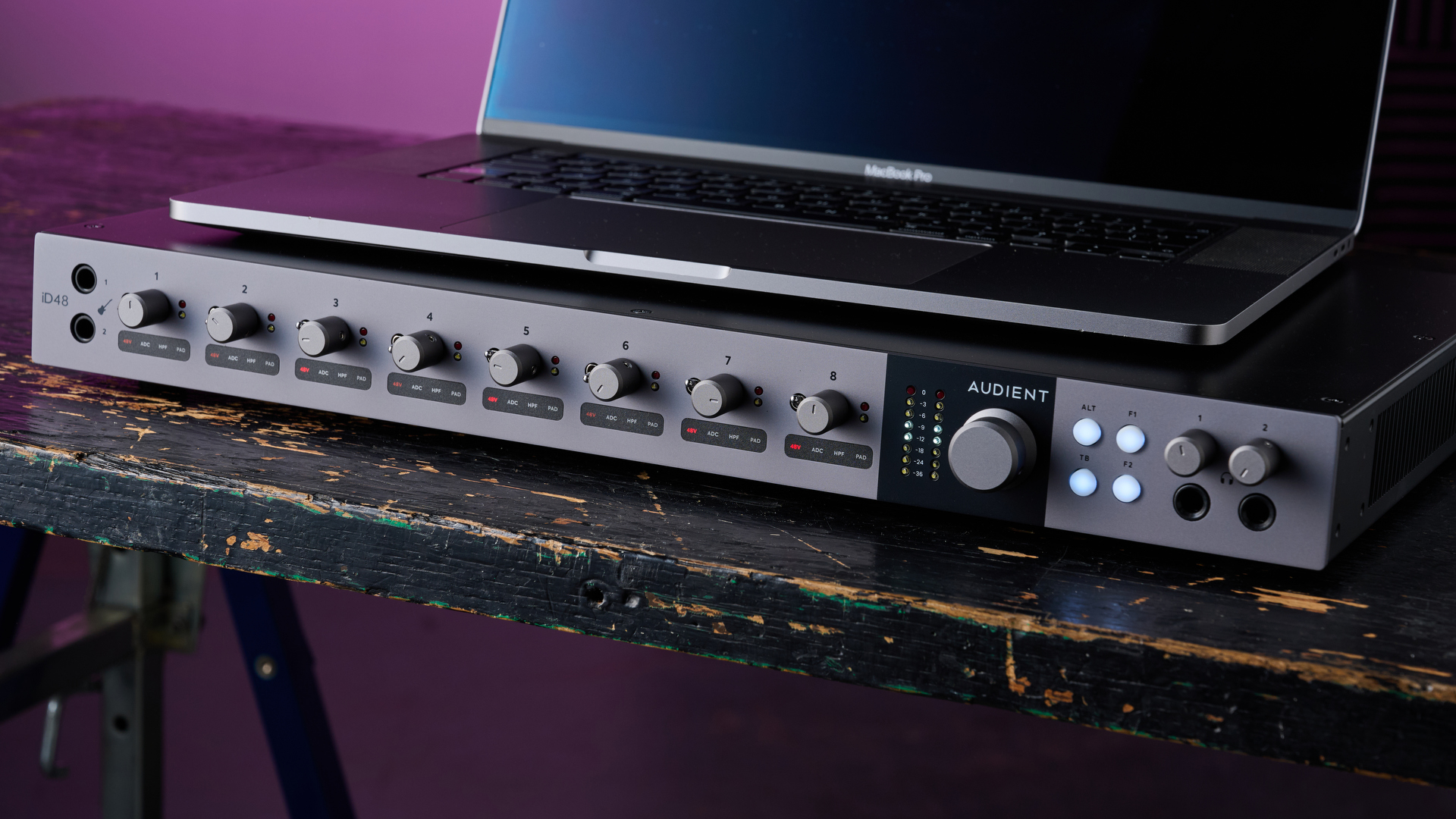MusicRadar Verdict
An evolution rather than a revolution, this refresh to the core SL line reaffirms Novation's status as the controller kings.
Pros
- +
Solid build and good keyboard feel. Loads of controls and visual feedback. Very flexible, thanks to Automap 3. Keystroke-mapping is very powerful. Touch-sensitivity works very well.
Cons
- -
Can be overwhelming. Pads don't send MIDI in plug-in maps.
MusicRadar's got your back
Even though dedicated controller hardware is experiencing a surge in popularity of late - see NI's Maschine, Akai's APC40 and the Cubase and Sonar control systems - many of us are still seeking a 'do-it-all' device that can take control of our DAWs and plethora of plug-ins.
Novation's SL series has long been known as perhaps the best universal controller range around, and now the company has updated it to give us the SL Mk II series, with 25-, 49- and 61-key models, as well as the sleek white ZeRo SL Mk II, which lacks keys but has longer faders and a crossfader.
Overview
The action of the semi-weighted Fatar-made keyboard is very pleasing, and it has aftertouch too, with further Rick Wakeman-esque keyboard heroics being made possible via the XY pad and the combined pitch and modulation joystick.
The drum pads improve on the hard-faced originals, being made of a softer type of rubber. They're velocity-sensitive, and not especially precise in this regard, but still useful. There are 32 assignable buttons (including transport controls), and they're all backlit now, to reflect their status, as are the other system buttons.
As for those knobs, the lower row are of the traditional 'nought-to-ten' variety while the upper ones are endless rotary encoders with flashy new LED rings that denote the current parameter position. They turn more smoothly than the 'clicky', detented ones of old too.
The encoders feel slightly slack, as do the fader caps, but other than that, the unit feels really solid and well constructed without being heavy. Around the back are connections for USB (the device can be bus-powered); DC power (PSU not supplied); MIDI In/Out/Thru; a further MIDI Out; and inputs for sustain and expression pedals. The Mk II series has ditched the option for battery power - no great shame, we say.
The original SL models had dual LCD screens to show the parameter/value assigned to the controls, but the new units have only one screen. In use, we didn't miss it at all, for a number of reasons.
Firstly, sliders and pots are now touch-sensitive, so if you lay a finger on one, the LCD's focus will shift to its particular row. And the LED-encrusted rotary encoders and backlit buttons give clear visual feedback.
Automap
But aside from that, you've got the Automap 3 software to show you what's going on, and it's this that makes Novation's controllers so attractive (it works with all SL series devices and the dinky Nocturn).
Automap comes in two flavours, Standard and Pro, and you get the Pro version with SL Mk II, featuring multiple device support, keystroke assignment, XY pad mapping, drag and drop, and AutoView.
The Automap Server runs alongside your music software, providing a way for the controller to interact with so-called Clients. A Client can be: a 'wrapped' plug-in (instrument or effect), a compatible DAW's mixer, or the Automap MIDI Client, which provides good old MIDI control.
In the Plug-in Manager, you specify which plug-ins will be 'wrapped' to work with Automap (VST, AU, RTAS and TDM are supported). The system taps into the plug-in parameters you'd get when using host automation, as opposed to sending MIDI to them.
The odd plug-in might not play nicely, so you can opt out of wrapping it. We had trouble with Rob Papen's SubBoomBass, but Novation sneaked us a beta of the imminent Automap 3.1, which resolves the issue.
How does it work?
With your DAW up and running, tapping the View button (or touching a pot or fader, if you've enabled AutoView) causes the Automap Heads Up Display to pop up on your monitor. The HUD offers a visual overview of the physical controls of the device, showing mapped parameters and values; this is your Control Map, and you can define one per Client. When you open a plug-in's GUI or select a Client via the hardware, its Control Map is loaded.
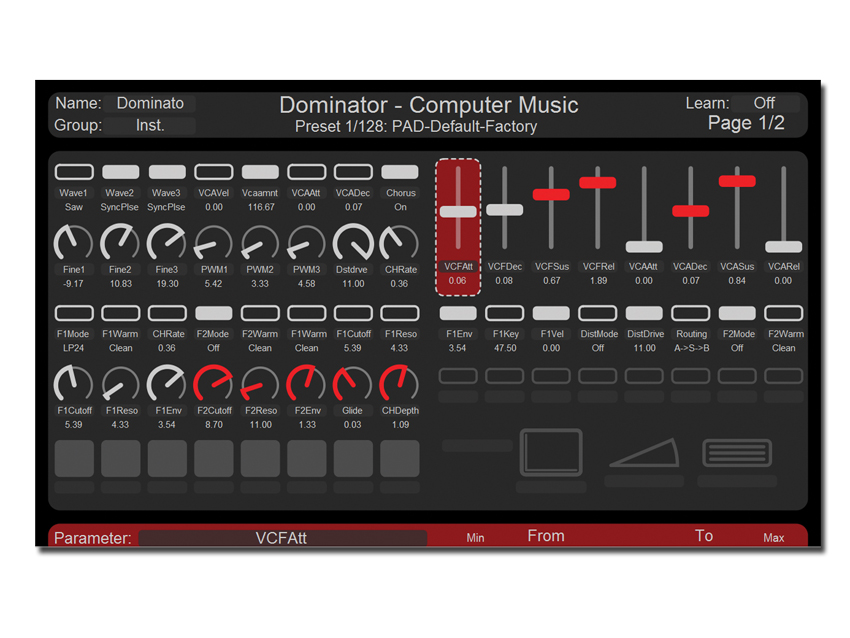
Assignments can be made by tapping the Learn button on the hardware, twiddling a parameter in software, then touching the knob or fader you'd like to assign it to. Double-tapping Learn latches the process, to enter a whole load of assignments in succession.
The software can be used to manually define assignments, set parameter ranges, determine how buttons work (momentary, toggle, step through value, etc). Once you've got a good control scheme for a particular Client, you can save it as the default mapping. And if you run out of physical controls for a particular Client, you can define extra pages of assignments, easily selected via the hardware.
One extremely cool addition for Automap 3 Pro is the ability to have any control send QWERTY keystroke events to the active window. This gives the potential for controlling DAW functions whilst playing with synths, for example.
Ableton Live users in particular should take note, as you can use Live's comprehensive key-mapping system to create some mind-boggling setups. We immediately struck upon the idea of binding the drum pads to Live's virtual keyboard, and using them to trigger Drum Racks, amongst other things.
The keyboard and modulation stick are exempt from the Automap scheme, independently pumping out a steady torrent of bog-standard MIDI data.
One annoyance is that while drum pads can be mapped to parameters, it seems they can't send MIDI notes as part of a plug-in Control Map (ie, like the keyboard does).
There are up to 16 MIDI Control Maps too, which are useful for, say, controlling an Ableton Live set or routing to external hardware. You can also create mixer Control Maps (to control level, pan, send, solo, arm and mute), if your DAW supports Automap. This works with Cubase, Nuendo, Sonar and Tracktion, while you can use Automap HUI for Logic, Pro Tools and Reaper.
Ableton Live doesn't support either, but you can control Live's mixer, fire off clips and tweak plug-ins via the Advanced mode that the SL series relied on before Automap existed.
Finally, the Speed Dial controls whatever's under your mouse pointer by sending a 'click and drag' event - it works reasonably well, too.
Summary
Getting hands on, and the physical changes for SL Mk II are definite improvements - it quickly becomes second nature to stroke a control to discover its function, for instance.
Obviously, Automap 3 makes for a flexible and potentially complex system, and it can be overwhelming at times (as with any mapping system, to be fair). It's true that it's sometimes quicker to just use the mouse, especially if you don't define logical Control Maps. And you'd probably lose your mind if you tried to use Automap to control everything in your rig!
However, the system really comes into its own when you've defined sensible mappings for your most used synths and effects. It's great for performance work too - this is where Automap Mixer control makes the most sense, as while it's not suitable for serious mixing, it's just the thing for jamming with levels and toggling channels on the fly. Oh, and we're really looking forward to seeing what crazy schemes people come up with using the keystroke-binding features!
Computer Music magazine is the world’s best selling publication dedicated solely to making great music with your Mac or PC computer. Each issue it brings its lucky readers the best in cutting-edge tutorials, need-to-know, expert software reviews and even all the tools you actually need to make great music today, courtesy of our legendary CM Plugin Suite.
“After every take, Mutt would say, ‘Check the tuning, man!’ This went on and on for almost a year. One day, I just gave him the guitar and said, ‘You tune it. I can’t take this anymore!’”: How legendary producer Mutt Lange drove the Cars half-mad
“Its provides the mix ‘glue’ that makes everything sound cohesive and finished”: Here's how to compress your mix bus for sonic punch
“I remember thinking: ‘Wouldn’t it be great if I could ask Sting to sing that line?’ Suddenly someone said: ‘Sting’s here on holiday! He’s on the beach!’” How Mark Knopfler got lucky with Money For Nothing
